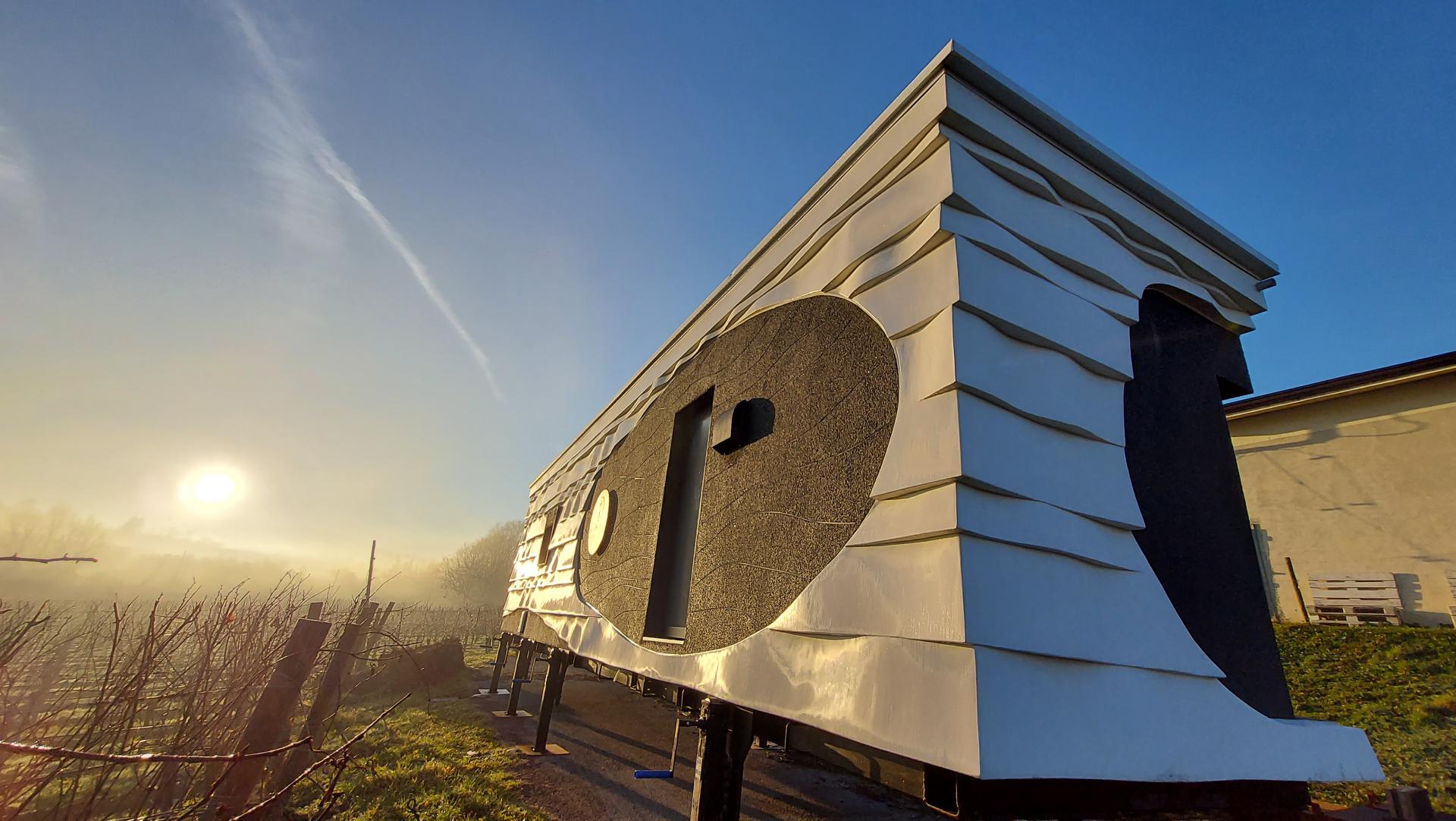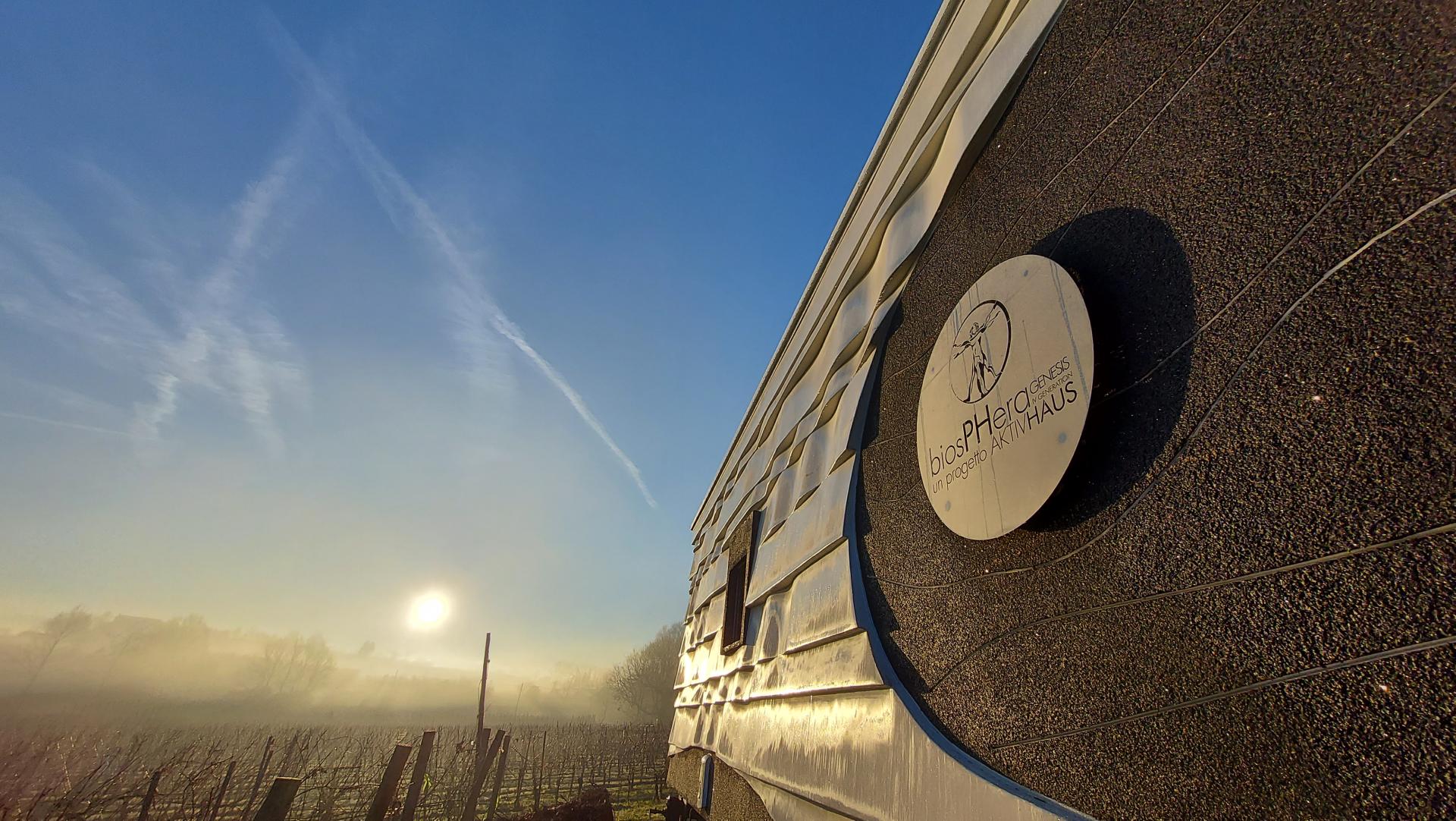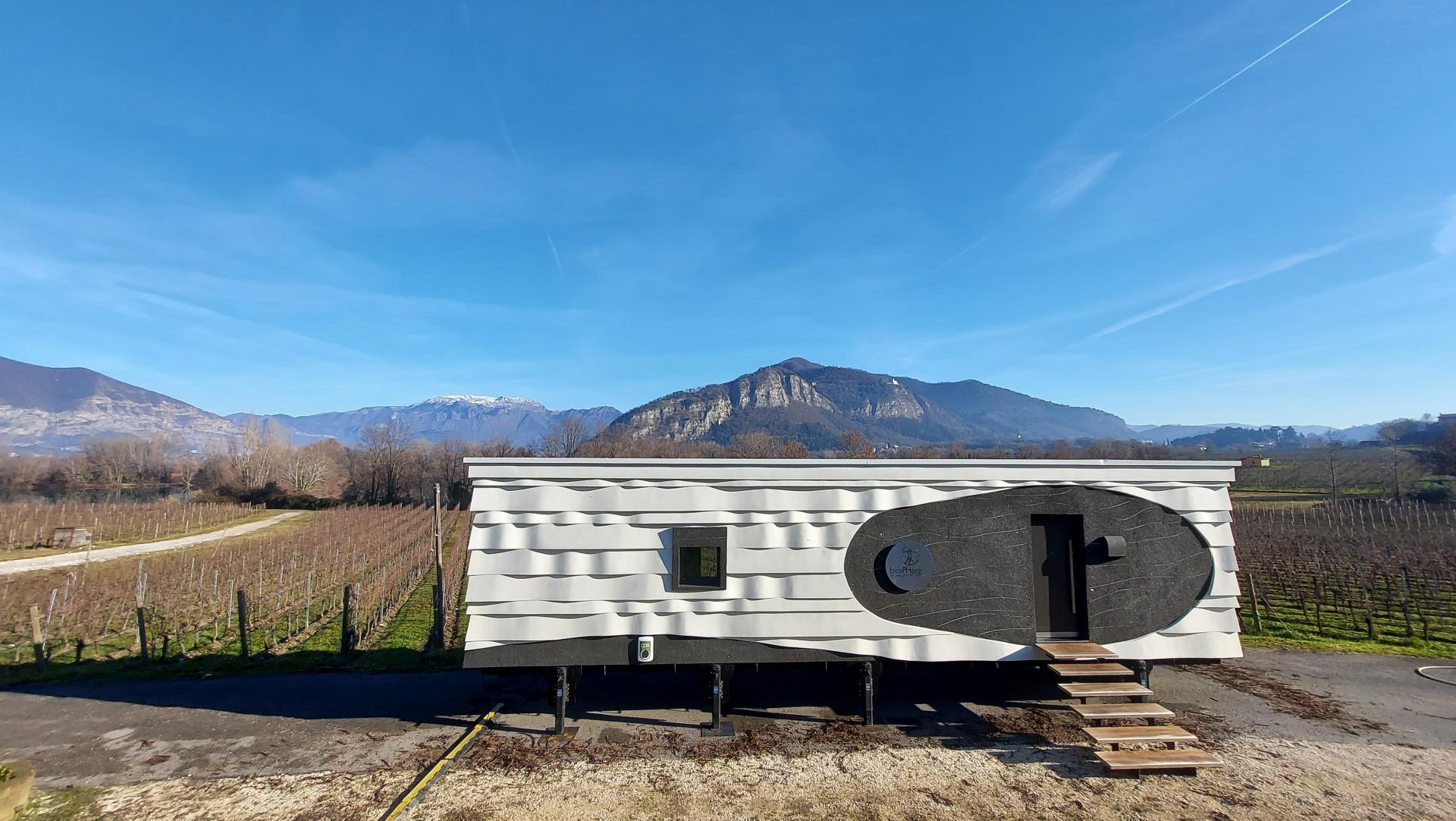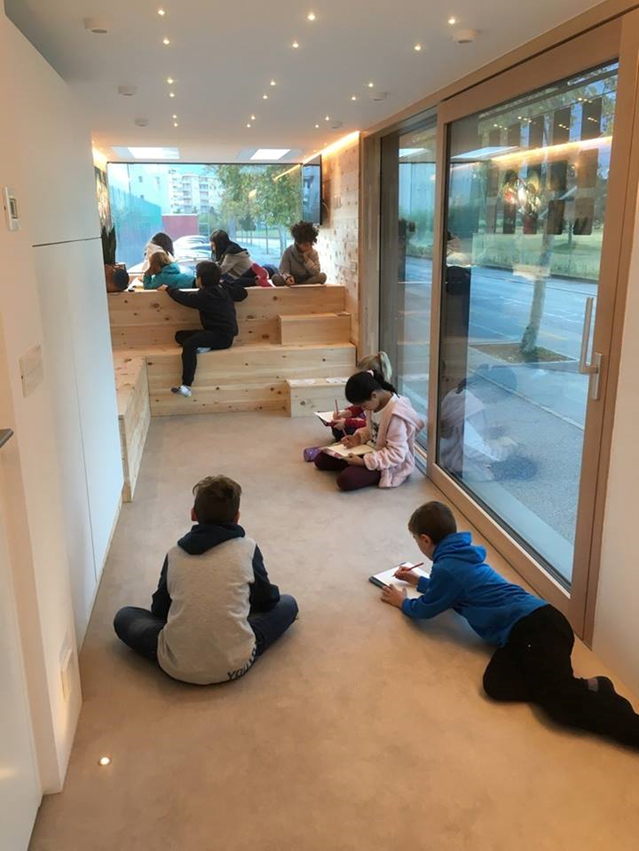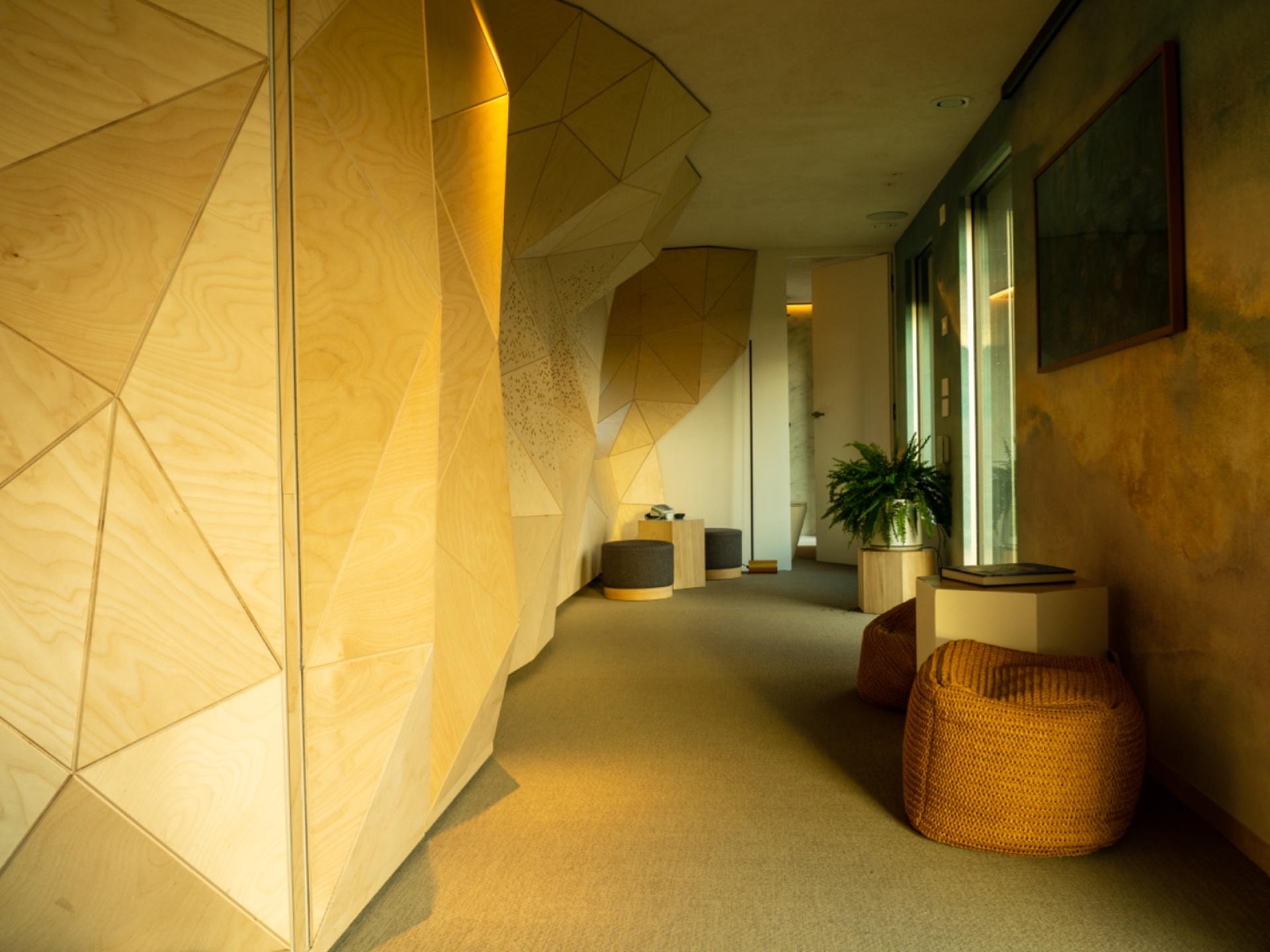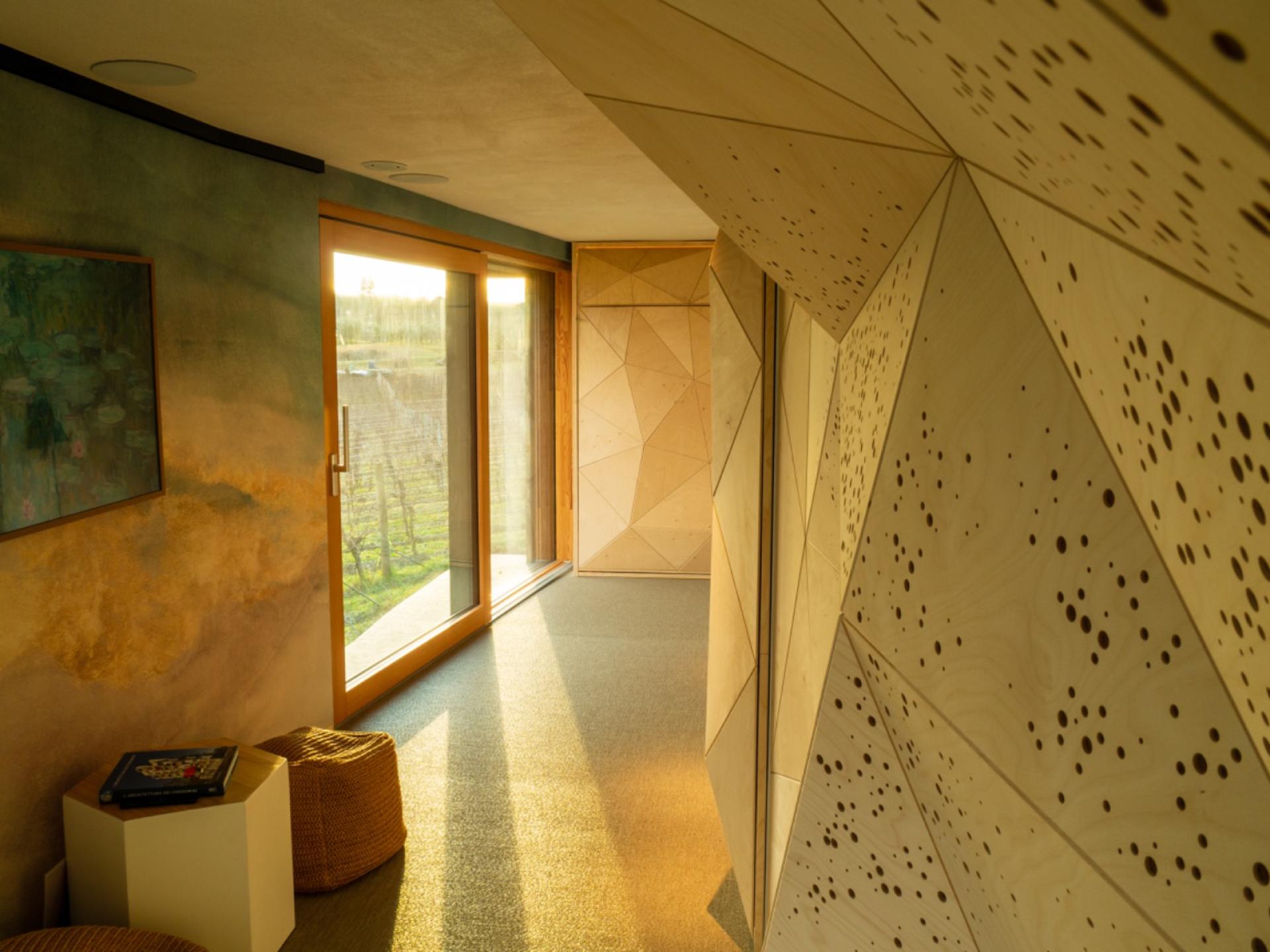BIOSPHERA ACADEMY
Basic information
Project Title
Full project title
Category
Project Description
Biosphera is a project conceived by Aktivhaus and focused on the construction of houses capable of bringing real well-being to the inhabitants. It has become a permanent itinerant training centre after meetings with 6,000 high school students and about 60,000 people met to date with 120 events in 40 different cities. The main objective is raise awareness of more sustainable and green lifestyles in the younger age groups thanks to biophilic design and sense design.
Geographical Scope
Project Region
Urban or rural issues
Physical or other transformations
EU Programme or fund
Which funds
Description of the project
Summary
Biosphera is the name of energy self-sufficient housing units, developed with the contribution of researchers, professionals, universities, and companies. By adopting the most advanced and innovative technologies, the spaces conceived by Biosphera aim to place man, his senses, his needs, and his physiology at the centre of architecture and design. Biophilia and Sense Design represent a new paradigm through which it is possible to rethink the spaces intended for humans, considering the Body-Mind system in a condition of perfect balance. This goal is achieved in two ways: imitating Nature as a regenerative tool from cognitive fatigue and psychophysiological stress and creating artificial environments that are in keeping with the desire of human nature. Starting from these constructs, the goal of the Biosphera project is to test the most advanced housing technologies in the world in the study module and then implement them in new generation buildings, to bring about a change of paradigm and to put the new generations in the conditions of designing a sustainable lifestyle and starting them towards social, environmental and economic well-being. For these reasons, we implemented the project with an Academy which considers three main aspects: care of people, care of the environment and sharing of resources and tools for collective well-being. The Academy's approach is systemic with a perfect integration between scientific knowledge and high-level practices that allow the transfer of a sustainable technology gained in more than 10 years of studies and applications for the living well-being of people and nature. The main objective of the Academia is raise awareness of more sustainable and green lifestyles in the younger age groups thanks to biophilic design and sense design. We want to deepen with them the link between humans and diseases from a confined environment by developing industrialized solutions for existing or newly built structures.
Key objectives for sustainability
The project has been developed with the aim of:
1. Test and monitor: construction quality, energy quality, air quality, environmental quality of advanced housing modules
2. Telling and describing the most advanced construction technologies through a European road show of the housing module and through the story of those who live and live there
3. Develop together with the designated institutions a new constructive protocol focused on human well-being
4. Reduce the environmental impact of building construction processes
5. Implement the technologies tested in Biosphera in constructions and buildings used for the various possible uses of homes, reception facilities, offices, hospitals, etc.
The Biosphera Academy was born thanks to the meetings that took place with 6,000 high school students and about 60,000 people met to date with 120 events in 40 different cities.
The Academy allowed the implementation of the Biosphera project with the intent of enable people to think and design buildings that provide a restorative experience for those living/working in them. To this end, each space within the restorative building has to be specifically designed to foster human wellbeing and a sense of hereness, by providing an environment which allows recovery from urban stress and daily mental fatigue, and is configured in such a way as to allow the experience of relaxation, fascination and interaction with the environment, enclosure, separation from distractions, environmental stimulation, coherence, complexity, affordances, opportunities for visual contact with Nature and the presence of biomorphic patterns, characteristics that have to be carefully assessed in a building in order for it to be restorative (see the Biophilic Quality Index; Berto & Barbiero, 2017).
Key objectives for aesthetics and quality
Genesis is the last module creates in Biosphera: an itinerant housing module transportable by road energy self-sufficient (close to zero energy) with a construction system in wood from PEFC-FSC certified sustainable supply chains. The living module is equipped with all the normal services for living (LED lighting, induction kitchen, appliances, heating and cooling, chemical toilets that do not require connection in the sewer). Its main purpose is to test the relationship between human physiology and the confined envelope that surrounds it (third skin) when external climatic conditions vary (from -20 to + 40°C). We can collect vital parameters (skin temperature, frequency cardiac, electrodermal activity) relating them to the new generation envelope which thanks to static hyperinsulation it can reduce energy consumption by 95% traditional and ensure homogeneous internal temperatures varying from 21°C in winter and 26°C in the summer period and above all it can maintain the exchange proportions radiative-evaporative-convective that our body detects as "well-being-comfort" or satisfaction of the senses involved (thermal touch-mechanical touch) without traditional systems. The foundation of the project is to preliminarily experience the benefits that a new generation envelope can bring to the human being inside an environmental context characterized by high levels of stimulation due to its climatic and urban pollution characteristics. The participants of the academy, and in particular the student public, found practical feedback from multidisciplinary studies and themselves become protagonists of the effectiveness of the housing modules designed in Biosphera.
Key objectives for inclusion
Biosphera Academy allows to reach 6000-10000 students per year to carry out school activities aimed at sustainability with practical demonstrations thanks to the Biosphera project.
Thanks to the targeted events, between 3,000 and 6,000 technical figures have been involved (architects, engineers, responsible public technical offices, etc.). In addition, hundreds of jobs are provided for the implementation and testing of materials and subsequent commissioning, and communication activities. Biosphera is the only traveling module in the world that integrates Biophilic Design today applied in the most important construction and renovation projects, such as the campuses of Apple, Facebook, Google, or the Pentagon building that reduces environmental stressors to propose an environment perceived as regenerative, because it is consistent with the structure psychophysics of the human being, genetically determined by our evolutionary history. The comfort of the sensory apparatus and, consequently, the optimization of the use of electrochemical energy is the final aim of the project: the goal is to reach the level of optimal stimulation, through the assembly of intelligent buildings built around the human needs, able to adapt to human reactions. The experimentation has opened several fields of development in the various complementary construction sectors unified by one aim to make human beings more efficient and increase their recovery capacity, concentration and reducing physical/emotional stress. In fact, together with the above we have integrated elements relating to Biophilic Design into the architectural design model inspired by biophilia, our innate ability to pay attention and to seek a relationship with all that is alive and it's natural.
Results in relation to category
Construction system in wood from PEFC-FSC certified sustainable supply chains;recyclable materials at 96% of the total volume;5 KwP invisible integrated photovoltaic production system (BIPV technology); electrical storage system with salt battery 100% recyclable;compact aggregate heat pump without external monobloc unit for heating-cooling-dehumidification-water sanitary hot production integrated with photovoltaic;controlled mechanical ventilation with 90% winter heat recovery and antibacterial-antiviral sanitizing system of the air through UV light-C; Plant-based internal air filter function system (Sanseveria trifasciata) with photocatalic inexhaustible filter;Domotic internal lighting system based on automatic change of color temperature and light intensity in the midst of external climatic conditions; Sound diffusion system using ambisonics environmental technology in therapeutic frequency range neurostimulants (0.4-4-432-532 Hz); Aromatherapy diffusion system using Pinus cembra essence oil in bed area for reduction of heart rhythm and blood pressure; H24 remote medical clinical monitoring system with workstation fixed telemedicine (pulse oximeter, surface temperature, blood pressure, heart rate, pulsed blood volume); hot-cold emission system in pure radiant with extended ceiling (celestial vault effect mode simulation) according to the principle of the proportion of human radiation exchange (radiation-according to convention evaporation); three-dimensional floors for plantar microstimulation; total voice home automation control for people with disabilities; digital library; energy consumption monitoring; photovoltaic production;electrical storage; air quality; physiological data; environmental parameters. All systems are already industrialized, and the cost is accessible to the average European income bracket (4-person family, average income 2500 euros/month) and are applicable in scalable form to existing buildings to be restored (90% of the European building)
How Citizens benefit
The project was born collecting information and data from people about their well-being in indoor space. It is evidenced that stress occurs when the individual cannot cope with the demands from the environment. This mismatch causes at first a state of discomfort and then symptoms and illnesses related to the stress response (Baroni & Berto, 2013). Environmental stress isn’t due exclusively to the presence, indoor or outdoor, of so-called environmental stressors (noise, heat, cold, inadequate lighting, crowding, air pollution, traffic, architectural dysfunctions, etc.), but also when environmental information is too intense, complex, or incoherent, and when the individual has no control over the environment. These situations cause negative physiological responses, the appearance of negative feelings and emotions and the decreasing of cognitive skills.
The side effects of the modern lifestyle on people's health, show that (from WHO):
- 70% of respiratory diseases are due to poor air quality
- 4.3 million of people die every year from domestic pollution
- 50% - 60% of absenteeism is attributable to stress in the work environment
- 70% - 80% of our life takes place indoors
For this reason, during the various stages, the module was inhabited by specially chosen and educated people, who were given a regulation containing the rules of use and behaviour to be upheld, to guarantee a correct and respectful attitude also towards the surrounding environment. In this way, people and visitors contribute to the collecting data about vital parameters and were able to experience the benefits of this type of construction living a regenerative experience in a confined space.
The module was also used for didactic activities, proving to be a versatile space suitable for a wide range of indoor activities: living, working, training and recreational space.
Physical or other transformations
Innovative character
Biosphera project has transformed studies in engineering, architecture, biology, ecology, psychology, medicine, physiology of complex systems, physics and philosophy into practice providing innovative solutions that lead to the improvement of well-being with attention and care to the environment that hosts us. Further, the organization of a road map for the third version of the module (Biosphera Equilibrium) made possible to reach a large number of people.
The participants of the events, and in particular the student public, found practical feedback from multidisciplinary studies and themselves become protagonists of the effectiveness of the housing modules designed in Biosphera.
All the data collected allow the experts involved in to improve the technologies and give new insights with the last Genesis module. In fact, another of the innovative aspects concerns the application of neuroscience which provide the possibility to understand how the variables of the external world can influence our cognitive, thought, or emotional processes. This allows to apply the studies of subjects such as music therapy, lighting technology, olfaction therapy and thermal therapy by making the occupants of the modules designed by Biosphera live a regenerative experience. Further, design with nature in mind makes financial sense that led for a real application of sustainability as demonstrated in the itinerant Biosphera Academy.
Another innovative and very important aspect is the systemic approach which concerns both the construction phases and the knowledge transfer activities: there is a perfect integration between scientific knowledge and high-level practices that allow the transfer of a sustainable technology gained in more than 10 years of studies and applications for the living well-being of people and nature.
Learning transferred to other parties
The Biosphera project considers sustainability and, therefore, the spheres that regulate it: environmental, social and economic. The systemic model that has been derived from this assumption is the one applied for the construction of housing modules: considering all levels of the ecosystem and taking care of them for those who live there and for future generations.
Designing with nature in mind contributes to local and planetary improvement and that is why the Biosphera model can be replicated in different contexts: residential, tertiary, school, hospital, and hotel tourism.
It can also provide an example of academic-university support in this moment of full paradigm shift: energy efficiency goes hand in hand with human efficiency.
The idea of the Academy stems from the need to make the technologies applied in the housing modules of the Biosphera project available and transfer them to experts, to the new generations and make them enter the new generation housing models. For this reason, events will continue to be organized in various European cities to raise awareness of the efficiency and regenerative capacity of these modules to provide new and sustainable solutions.

